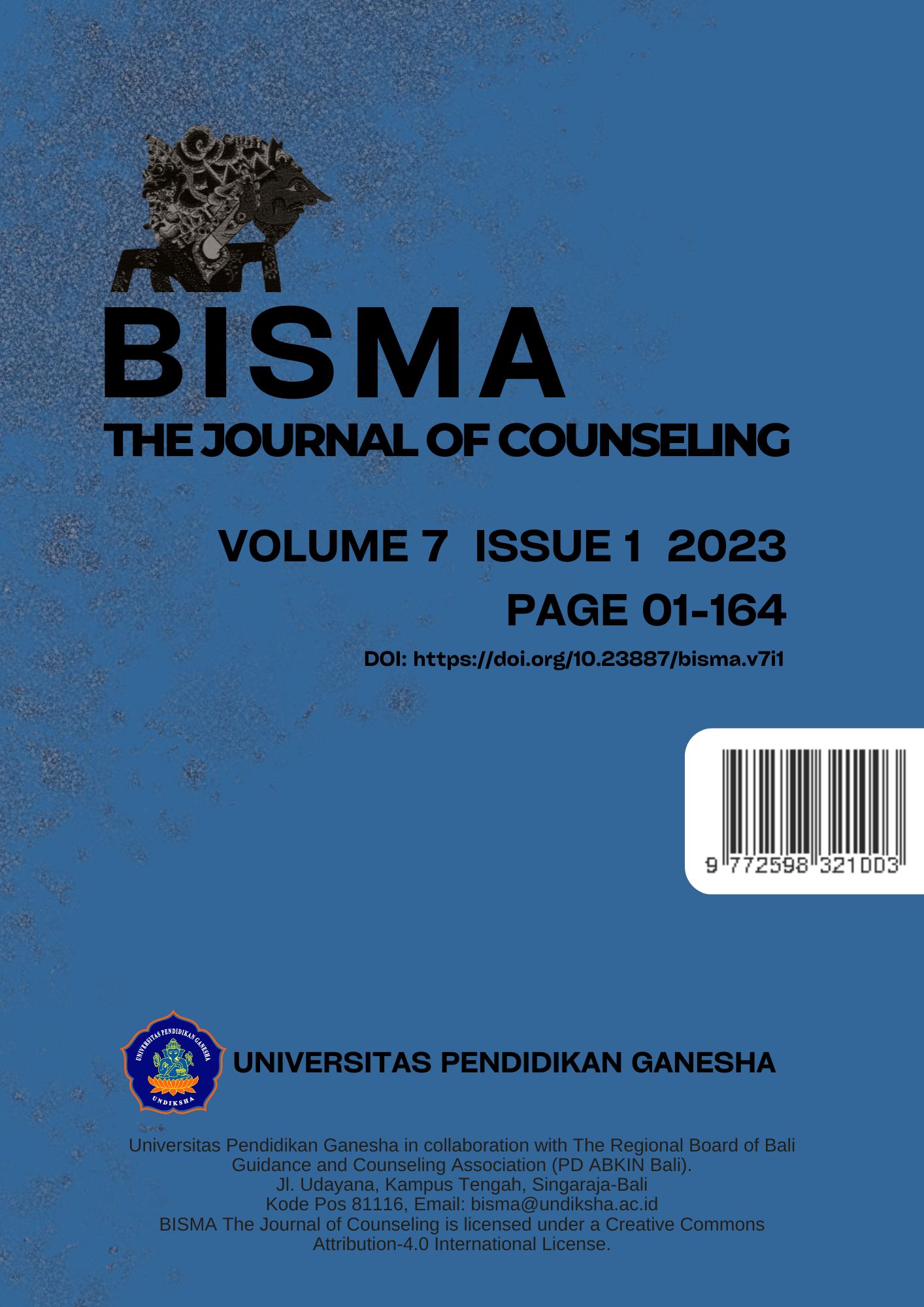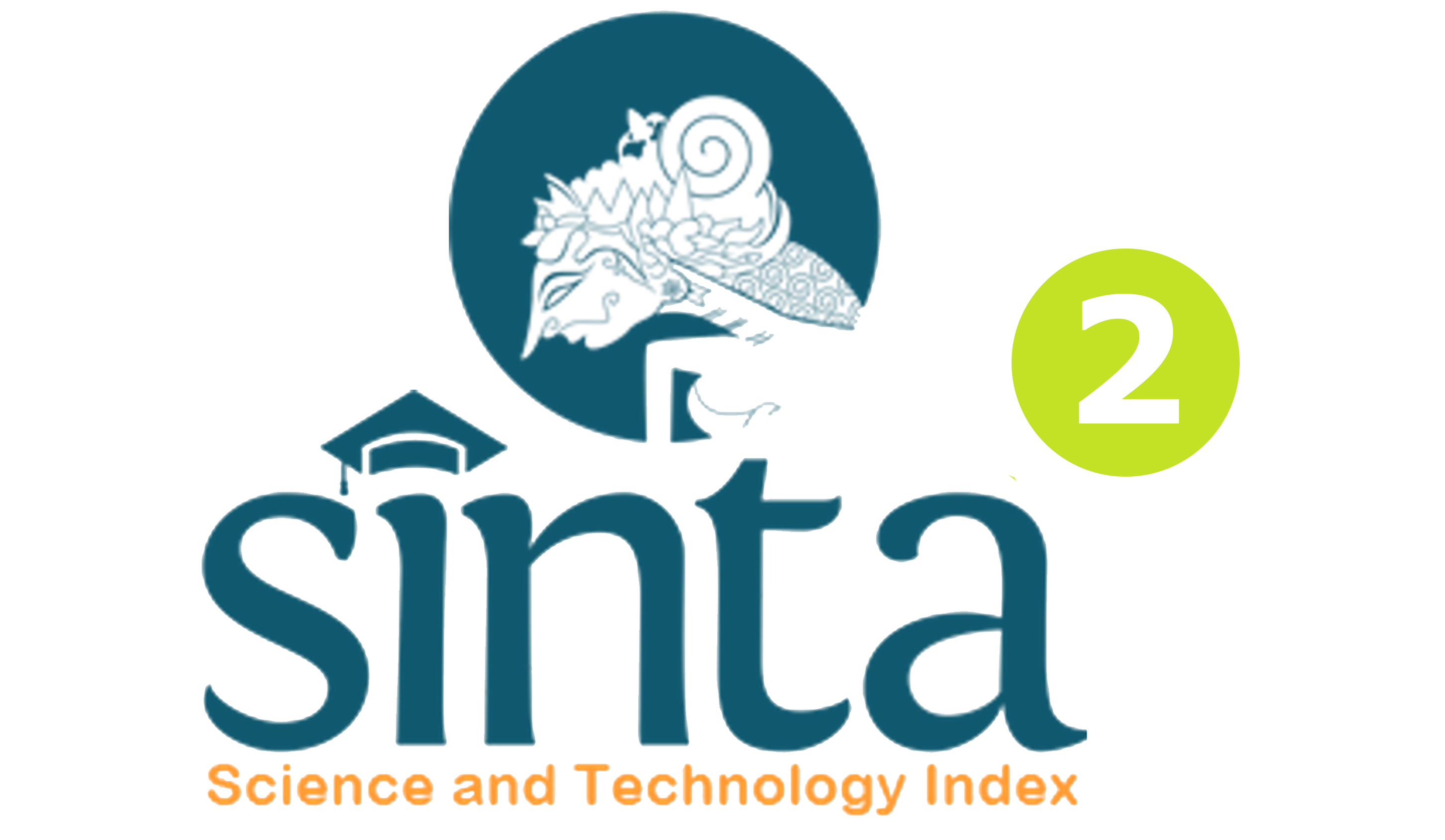The Hope of Indonesian Students: Current and Future Counseling Challenges
DOI:
https://doi.org/10.23887/bisma.v7i1.55265Keywords:
Guidance and CounselingAbstract
Hope is a component of the character strength dimension, combining goal-achieving plans (pathways thinking) and goal-achieving encouragement (agency thinking). Hope correlates with various factors in individuals' development and lives (personal, social, academic, and career), but few aspects related to the pandemic have yet to be revealed, particularly in Indonesia. Therefore, to bridge the gap, this study aims to uncover the hope of the 324 senior high school students who voluntarily participated in this research and came from several provinces and regions in Indonesia. The study used descriptive quantitative methods based on the Hope Scale. The data was provided using a Google form and analyzed using Excel and the JASP 0.16.1.0 software. The results showed that 58.3% of students were in the deficient category. There is a difference in the proportion of hope between males and females based on gender. Furthermore, the Sundanese ethnicity has the lowest hopes of all the ethnic groups. The findings may assist certain parties, such as school counselors, in identifying alternative solutions to help students and emphasizing and paying attention to adolescents for them to develop hope.
References
Alsoud, A. R., & Harasis, A. A. (2021). The impact of covid-19 pandemic on students' e-learning experience in Jordan. Journal of Theoretical and Applied Electronic Commerce Research, 16(5), 1404–1414. https://doi.org/10.3390/jtaer16050079.
Aminah, A. S., Ilfiandra, & Saripah, I. (2020). Strength Based Skill Training Untuk Peningkatan Kekuatan Harapan Siswa. Journal of Innovative Counseling : Theory, Practice & Research, 4(2), 70–85.
Asare Vitenu-Sackey, P., & Barfi, R. (2021). The Impact of Covid-19 Pandemic on the Global Economy: Emphasis on Poverty Alleviation and Economic Growth. The Economics and Finance Letters, 8(1), 32–43. https://doi.org/10.18488/journal.29.2021.81.32.43.
ASCA. (2012). The ASCA National Model: A Framework for School Counseling Program (3rd ed.). Alexandria: VA: Author.
Asiah, N., Rusmana, N., & Saripah, I. (2022). Strength-Based Counseling: Alternative Counseling to Increase Student Hope during the COVID-19 Pandemic. Bisma The Journal of Counseling, 6(1). https://doi.org/10.23887/bisma.v6i1.45347.
Bareket-Bojmel, L., Shahar, G., Abu-Kaf, S., & Margalit, M. (2021). Perceived social support, loneliness, and hope during the COVID-19 Pandemic: Testing a mediating model in the UK, USA, and Israel. British Journal of Clinical Psychology, 60(2), 133–148. https://doi.org/10.1111/bjc.12285.
Bernardo, A. B. I. (2020). Measuring hope during the COVID-19 outbreak in the Philippines : development and validation of the state locus-of-Hope scale short form in Filipino. Current Psychology.
Bernardo, A. B. I., & Estrellado, A. F. (2014). Measuring Hope in the Philippines : Validating the Short Version of the Locus-of-Hope Scale in Filipino. Counseling and Educational Psychology Department, 1649–1661. https://doi.org/10.1007/s11205-013-0573-7.
Braun-Lewensohn, O., Abu-Kaf, S., & Kalagy, T. (2021). Hope and Resilience During a Pandemic Among Three Cultural Groups in Israel: The Second Wave of Covid-19. Frontiers in Psychology, 12(May 2020), 1–12. https://doi.org/10.3389/fpsyg.2021.637349.
Bryce, C. I., Alexander, B. L., Fraser, A. M., & Fabes, R. A. (2020). Dimensions of hope in adolescence: Relations to academic functioning and well-being. Psychology in the Schools, 57(2), 171–190. https://doi.org/10.1002/pits.22311.
Callina, K. S., Johnson, S. K., Buckingham, M. H., & Lerner, R. M. (2014). Hope in Context : Developmental Profiles of Trust , Hopeful Future Expectations , and Civic Engagement Across Adolescence. Jurnal Youth Adolescence. https://doi.org/10.1007/s10964-014-0096-9.
Cankaya, Z. C., & Denizli, S. (2020). An explanation of happiness with secure attachment, basic psychological needs and hope: The case of Turkish university students. European Journal of Educational Research, 9(1), 433–444. https://doi.org/10.12973/eu-jer.9.1.433.
Cheavens, J. S., Heiy, J. E., Feldman, D. B., Benitez, C., & Rand, K. L. (2019). Hope, goals, and pathways: Further validating the hope scale with observer ratings. The Journal of Positive Psychology, 14(4), 452–462.
Chen, J., Huebner, E. S., & Tian, L. (2020). Longitudinal relations between hope and academic achievement in elementary school students: Behavioral engagement as a mediator. Learning and Individual Differences, 78(January 2019), 1–10. https://doi.org/10.1016/j.lindif.2020.101824.
Davidson, O. B., Feldman, D. B., & Margalit, M. (2012). A focused intervention for 1st-year college students: Promoting hope, sense of coherence, and self-efficacy. Journal of Psychology: Interdisciplinary and Applied, 146(3), 333–352. https://doi.org/10.1080/00223980.2011.634862.
De, S. (2020). IMPACTS OF THE COVID-19 PANDEMIC ON GLOBAL EDUCATION. In COVID-19 Pandemic update 2020 (pp. 84–94). Royal Book Publishing. https://doi.org/10.26524/royal.37.6.
Gallagher, M. W., & Lopez, S. J. (2018). The Oxford handbook of hope. Oxford University Press.
Gallagher, M. W., Pedrotti, J. T., Lopes, S. J., & Snyder, C. R. (2019). Hope. In M. W. Gallagher & S. J. Lopes (Eds.), Positive Psychological Assessment: A Handbook of Model and Measures (Second Edi, pp. 77–95). Washington DC: American Psychological Association.
Gallagher, M. W., Smith, L. J., Richardson, A. L., D'Souza, J. M., & Long, L. J. (2021). Examining the longitudinal effects and potential mechanisms of hope on COVID-19 stress, anxiety, and well-being. Cognitive Behaviour Therapy, 50(3), 234–245. https://doi.org/10.1080/16506073.2021.1877341.
Gao, J., Zheng, P., Jia, Y., Chen, H., Mao, Y., Chen, S., … Dai, J. (2020). Mental health problems and social media exposure during COVID-19 outbreak. Plos One, 15(4), e0231924.
George, G., Lakhani, K. R., & Puranam, P. (2020). What has changed? The Impact of Covid Pandemic on the Technology and Innovation Management Research Agenda. Journal of Management Studies, 57(8), 1754–1758. https://doi.org/10.1111/joms.12634.
Hartanto, D. (2017). Profil Strengt of Hope Mahasiswa Calon Guru BK Berdasarkan Faktor Budaya. JOMSIGN: JOurnal Og Multicultural Studies in Guidance and Counseling, 1(1), 1–16.
Hartanto, D. (2020). The Effectiveness of Strength Based Counseling Model to Improve Academic Hope in Students. PSIKOPEDAGOGIA Jurnal Bimbingan Dan Konseling, 9(1), 32. https://doi.org/10.12928/psikopedagogia.v9i1.13069.
Karaman, M. A., Vela, J. C., & Garcia, C. (2020). Do hope and meaning of life mediate resilience and life satisfaction among Latinx students? British Journal of Guidance and Counselling, 48(5), 685–696. https://doi.org/10.1080/03069885.2020.1760206.
Kennedy, P., Lude, P., Elfström, M. L., & Smithson, E. (2012). Appraisals, coping and adjustment pre and post SCI rehabilitation: a 2-year follow-up study. Spinal Cord, 50(2), 112–118.
Knowles, J. R. P., Gray, N. S., O'Connor, C., Pink, J., Simkiss, N. J., & Snowden, R. J. (2021). The Role of Hope and Resilience in Protecting Against Suicidal thoughts and Behaviors During the COVID-19 Pandemic. Archives of Suicide Research, 0(0), 1–18. https://doi.org/10.1080/13811118.2021.1923599.
Laslo-Roth, R., George-Levi, S., & Margalit, M. (2021). Hope during the COVID-19 outbreak: coping with the psychological impact of quarantine. Counselling Psychology Quarterly, 34(3–4), 771–785. https://doi.org/10.1080/09515070.2021.1881762.
Lopes, S. J., & Snyder, C. . (2003). Positive Psychological Assessment: A Handbook of Models and Measures. New York: American Psychological Association.
Loucia Demetriou, Mirsiana Drakontaides, & Hadjicharalambous Demetris. (2020). Psychological Resilience, Hope, and Adaptability as Protective Factors in Times of Crisis: A Study in Greek and Cypriot Society During the Covid-19 Pandemic. Social Education Research, 20–34. https://doi.org/10.37256/ser.212021618.
Madan, S., & Pakenham, K. I. (2014). The stress-buffering effects of hope on adjustment to multiple sclerosis. International Journal of Behavioral Medicine, 21(6), 877–890.
Muyan-Yılık, M., & Demir, A. (2020). A Pathway Towards Subjective Well-Being for Turkish University Students: The Roles of Dispositional Hope, Cognitive Flexibility, and Coping Strategies. Journal of Happiness Studies, 21(6), 1945–1963. https://doi.org/10.1007/s10902-019-00162-2.
Ojala, M. (2015). Hope in the Face of Climate Change: Associations with Environmental Engagement and Student Perceptions of Teachers Emotion Communication Style and Future Orientation. Journal of Environmental Education, 46(3), 133–148. https://doi.org/10.1080/00958964.2015.1021662.
Ouweneel, E., Le Blanc, P. M., Schaufeli, W. B., & van Wijhe, C. I. (2012). Good morning, good day: A diary study on positive emotions, hope, and work engagement. Human Relations, 65(9), 1129–1154. https://doi.org/10.1177/0018726711429382.
Petersen, M. B., Christiansen, L. E., Bor, A., Lindholt, M. F., Jørgensen, F., Adler-Nissen, R., … Lehmann, S. (2022). Communicate hope to motivate the public during the COVID-19 pandemic. Scientific Reports, 12(1), 1–7. https://doi.org/10.1038/s41598-022-06316-2.
Peterson, C., & Seligman, M. E. . (2004). Character Strengths and Virtues: A Handbook and Classification. New York: Oxford University Press.
Rand, K. L., Shanahan, M. L., Fischer, I. C., & Fortney, S. K. (2020). Hope and optimism as predictors of academic performance and subjective well-being in college students. Learning and Individual Differences, 81(September 2019), 101906. https://doi.org/10.1016/j.lindif.2020.101906.
Redlich Amirav, D., Besor, O., & Amirav, I. (2021). Hope During COVID-19 Lockdown. Cureus, 13(November 2019), 1–9. https://doi.org/10.7759/cureus.15097.
Saha, J., Barman, B., & Chouhan, P. (2020). Lockdown for COVID-19 and its impact on community mobility in India: An analysis of the COVID-19 Community Mobility Reports, 2020. Children and Youth Services Review, 116, 105160. https://doi.org/10.1016/j.childyouth.2020.105160.
Shanmugam, H., Juhari, J. A., Nair, P., Chow, S. K., & Ng, C. G. (2020). Impacts of COVID-19 Pandemic on Mental Health in Malaysia: A Single Thread of Hope | Shanmugam | Malaysian Journal of Psychiatry. Malaysian Journal of Psychiatry Ejournal, 29(1), 78–84. Retrieved from https://www.mjpsychiatry.org/index.php/mjp/article/view/536/415.
Smith, E. J. (2006). The Strength-Based Counseling Model. The Counseling Psychologist, 34(1), 13–79. https://doi.org/10.1177/0011000005277018.
Snyder, C. R. (2000). Handbook of Hope: Theory, Measures, and Applications. USA: Academic Press.
Snyder, C. R., Feldman, D. B., Shorey, H. S., & Rand, K. . (2002). Hopeful Choices: A School Counselor's Guide to Hope Theory. Professional School Counseling, 5(5). https://doi.org/10.1080/01926230309811.
Togo, O. T., Caz, C., & Kayhan, R. F. (2018). The relationship between resilience and constant hope in students studying sports science. European Journal of Educational Research, 7(3), 583–589. https://doi.org/10.12973/eu-jer.7.3.583.
UNSDG. (2020). Policy Brief: Education during COVID-19 and beyond. https://doi.org/10.24215/18509959.26.e12.
Yarcheski, A., & Mahon, N. E. (2014). Meta-Analyses of Predictors of Hope in Adolescents. https://doi.org/10.1177/0193945914559545.
Downloads
Published
Issue
Section
License
Copyright (c) 2023 Ipah Saripah, Nur Asiah

This work is licensed under a Creative Commons Attribution 4.0 International License.









